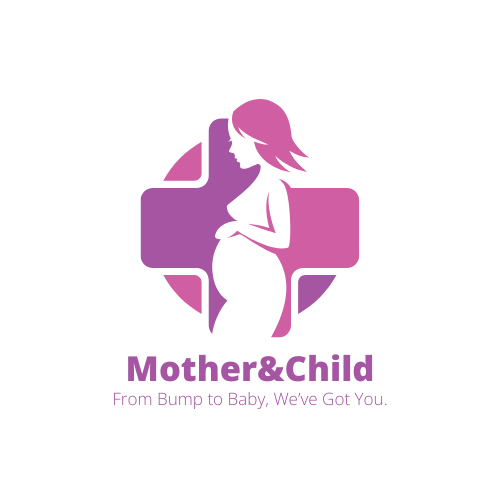
Why Universal Health Coverage Must Include Mothers: Global and African Perspectives
- June 23, 2025
- 0 Likes
- 121 Views
- 0 Comments
Abstract
Universal Health Coverage (UHC) promises access to quality health services without financial hardship. However, maternal health—especially in low- and middle-income countries—remains underprioritized. This paper highlights why UHC must include comprehensive maternal care, examining the pathophysiology of pregnancy complications, key clinical trials and studies, global and African statistics, and the broader health system impact. It concludes with a strong call to action, emphasizing that integrating maternal health into UHC is not only an ethical obligation but also a critical strategy to achieve Sustainable Development Goals (SDGs).
Introduction
Maternal health is a cornerstone of public health. Yet, an alarming number of women—especially in sub-Saharan Africa—still lack access to skilled care during pregnancy, childbirth, and postpartum. Universal Health Coverage (UHC), as promoted by the World Health Organization, aims to ensure that everyone receives needed health services without suffering financial hardship. However, unless maternal health is central to UHC strategies, global health equity will remain a distant goal (World Health Organization [WHO], 2023).
Pathophysiology: Why Maternal Health is Unique
Pregnancy induces major physiological changes in the cardiovascular, renal, endocrine, and hematologic systems. These adaptations are necessary to support fetal development but also make pregnant women vulnerable to complications:
- Preeclampsia: Characterized by high blood pressure and organ dysfunction, often leading to eclampsia or death without early diagnosis.
- Postpartum Hemorrhage (PPH): The leading direct cause of maternal death globally, caused by uterine atony or trauma.
- Sepsis: Infections post-delivery due to poor hygienic conditions or delayed intervention.
- Obstructed labor and unsafe abortion also contribute significantly to maternal mortality.
These conditions require specialized antenatal, intrapartum, and postnatal care, highlighting why maternal services cannot be excluded from UHC.
Global and African Statistics
- 303,000 women died from pregnancy-related causes in 2015, 99% in low- and middle-income countries (WHO, 2023).
- Sub-Saharan Africa accounted for roughly 70% of all maternal deaths worldwide (UNFPA, 2021).
- Over 60% of maternal deaths in Africa are preventable with timely access to skilled care.
- Financial barriers remain a leading cause for why mothers avoid hospitals—over 41% of women in Kenya cited cost as the reason for delivering at home (Kenya DHS, 2022).
Evidence from Clinical Trials and Studies
1. WHO Antenatal Care Trial
A multicenter randomized trial comparing focused antenatal care (FANC) with standard models showed that reduced visits with high-quality interventions were non-inferior in preventing adverse outcomes and could be scaled effectively (Villar et al., 2001).
2. Kenya: Free Maternity Services Policy (Linda Mama)
Introduced in 2013, this program significantly increased facility-based deliveries and skilled birth attendance (Gitobu et al., 2018). However, gaps in funding and implementation remain.
3. Ghana’s National Health Insurance Scheme (NHIS)
Inclusion of maternal health in NHIS led to higher ANC attendance and reduced maternal mortality rates (Dixon et al., 2011).
Health Systems and Economic Impact
Investing in maternal health benefits broader health systems:
- Reduces long-term healthcare costs from complications.
- Increases women’s participation in the workforce.
- Improves child survival rates—children of healthy mothers are 3x more likely to reach age 5 (WHO, 2023).
- Encourages intergenerational health by improving early-life care.
A $1 investment in maternal and child health yields a return of up to $20 in economic benefits (Global Financing Facility, 2021).
The Ethical and Human Rights Argument
Access to maternal healthcare is a human right. Article 25 of the Universal Declaration of Human Rights emphasizes the right to health for mothers and children. Leaving mothers out of UHC frameworks violates both moral and legal commitments by governments and global institutions.
Challenges to Inclusion in UHC
- Out-of-pocket costs for cesarean sections, drugs, and transport.
- Lack of trained health workers in rural settings.
- Gender inequality and sociocultural barriers.
- Fragmented health systems and poor integration of maternal services.
Call to Action
- National governments must make maternal health a core component of their UHC benefit packages.
- Donors and development partners should align funding with maternal health priorities.
- Civil society and media must advocate for maternal rights within UHC debates.
- Health systems must prioritize midwifery, emergency obstetric care, respectful maternity services, and continuum of care from pregnancy to postpartum.
Resources for Further Action
- World Health Organization – UHC and Maternal Health
https://www.who.int/initiatives/uhc - Global Financing Facility (GFF)
https://www.globalfinancingfacility.org - United Nations Population Fund (UNFPA) – Maternal Health
https://www.unfpa.org/maternal-health - PMNCH – The Partnership for Maternal, Newborn & Child Health
https://www.who.int/pmnch/en/ - Kenya Ministry of Health – Linda Mama
https://www.health.go.ke/linda-mama-program/
Conclusion
Universal Health Coverage will not be universal unless it includes mothers. Maternal health is not just a woman’s issue—it is a social justice, economic, and public health issue. Policymakers, health professionals, and communities must act together to ensure that no mother dies giving life because she couldn’t afford care. Africa and the global community must lead the way in making maternal care a non-negotiable pillar of UHC.
References
Dixon, J., Tenkorang, E. Y., & Luginaah, I. (2011). Ghana’s National Health Insurance Scheme: A national level investigation of its impact on maternal health care utilization. Health Policy, 99(3), 303–310. https://doi.org/10.1016/j.healthpol.2010.09.018
Gitobu, C. M., Gichangi, P. B., & Mwanda, W. O. (2018). The effect of Kenya’s free maternal health care policy on health facility delivery: a population-based study. International Journal for Equity in Health, 17(1), 1–9. https://doi.org/10.1186/s12939-018-0858-5
United Nations Population Fund. (2021). Trends in Maternal Mortality 2000 to 2017. https://www.unfpa.org/resources/trends-maternal-mortality-2000-2017
Villar, J., Ba’aqeel, H., Piaggio, G., et al. (2001). WHO antenatal care randomized trial for the evaluation of a new model of routine antenatal care. The Lancet, 357(9268), 1551–1564. https://doi.org/10.1016/S0140-6736(01)07203-1
World Health Organization. (2023). World Health Statistics 2023. https://www.who.int/publications/i/item/9789240078648
Global Financing Facility. (2021). Protecting Women and Children in the COVID-19 Crisis. https://www.globalfinancingfacility.org/protecting-women-and-children-covid-19-crisis



Leave Your Comment